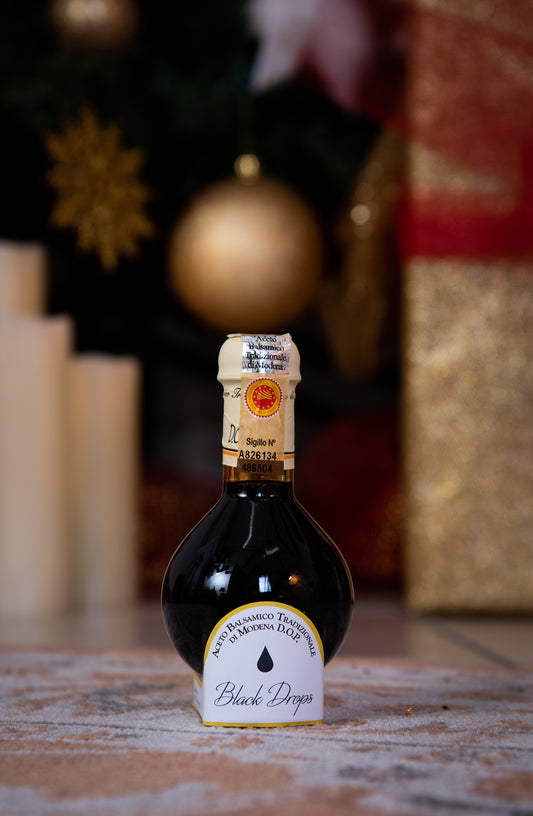We dedicated one of our previous articles to the difference between Balsamic Vinegar of Modena IGP and Traditional Balsamic Vinegar of Modena DOP . What we want to clarify today is the variegated world of Balsamic Dressings.
If DOP Balsamic Vinegar and IGP Balsamic Vinegar differ in terms of production methods, aging times, ingredients and are regulated by Product Protection Regulations, what is different about Balsamic Condiments ?
It is a segment of products that do not have production regulations or Disciplinary and do not have to undergo specific aging procedures (in fact it can be put on sale from the day after production), leaving full freedom of expression to the producer himself who can bottling your own Balsamic Condiment yourself and deciding on the type of bottle.
Balsamic condiments are products obtained by mixing concentrated grape must with wine vinegar, but depending on the quality they may contain added preservatives, colourings, thickeners, antioxidants, sweeteners or sulphites. On a sensorial level, the condiments are distinguished by their density and consistency.
Obviously, depending on the producer, the offer varies, in fact we can find on the market products with characteristics very distant from the traditional product, such as balsamic glazes, or we can find excellent artisan products (free of preservatives, colourings, thickeners, antioxidants, sweeteners or sulphites added) made with the same methods and guidelines of Balsamic Vinegar .
For example, the Cervino Label - 16-year-old Balsamic Condiment from Acetaia del Parco , a condiment that comes from a long aging of the mixture of concentrated, acetified cooked must from the province of Modena. The aging takes place in small wooden barrels for 16 years .
Or again the Monte Bianco Label - Balsamic Condiment aged 40 years - Acetaia de Parco , aged 40 years, an exceptional combination of cooked grape must and wine vinegar , which for decades rests in oak, chestnut, juniper and Mulberry.
Nothing to envy to Balsamic Vinegar!








